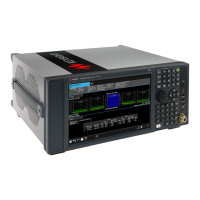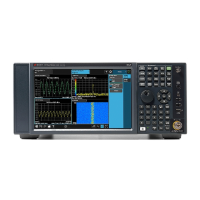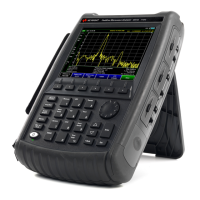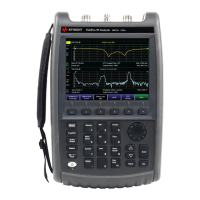154 N9030B PXA Signal Analyzer Service Guide
RF Section Troubleshooting (RF/Microwave Analyzers)
Troubleshooting
Troubleshooting
Quick Check to Verify the Low Band Signal Path
The analyzer has an internal 50 MHz amplitude reference signal that is used to
verify the low band path. This 50 MHz calibrator is used when the analyzer
performs many of the internal alignment routines. Therefore, the functionality
of the 50 MHz calibrator and low band path are critical to passing Align All
Now. Refer to the RF Lowband Path Block Diagram (Options 503, 508, 513,
and 526) in Chapter 13for details. Reference the instrument settings box on
the block diagram.
Equipment needed:
Spectrum Analyzer with frequency range to 8 GHz
Signal source with output power 0 dBm and frequency range to at least
3.6 GHz
Power splitter, 11667B
2 each, quality SMA or 3.5 mm cables
90° SMA (m) to SMA (f) adapter
MMCX (f) to SMA (f) cable
SMA (f) to SMA (f) adapter
SMA (m) to SMA (m) adapter
Turn the instrument on and allow it to complete its full boot up process to
Spectrum Analyzer mode. Use the internal 50 MHz, −25 dBm calibrator signal
as a reference for troubleshooting by pressing Mode Preset, Input/Output, RF
Calibrator, 50 MHz on the analyzer. Now press FREQ (Channel), 50 MHz,
SPAN (X Scale), 1 MHz, Peak Search. The 50 MHz reference signal should
measure 50 MHz @ −25 dBm ± 2 dB on the analyzer display. If the power level
is within tolerance, the low band path is functioning correctly at 50 MHz. If the
power level is incorrect, select the 4.8 GHz RF Calibrator and set the analyzer
center frequency to 4.8 GHz. Since several of the same signal path
components are shared between low band and high band, determining if the
problem appears in both paths is helpful.
To verify the high band path go to “Quick Check to Verify High Band RF Path”
on page 163.
If the power level is not within tolerance, press SPAN (X Scale), Zero Span,
AMPTD (Y Scale), Attenuation, 10 dB.
To perform the following checks, it will be necessary to remove the outer
cover and the top brace. See Chapter 16 for removal procedures.
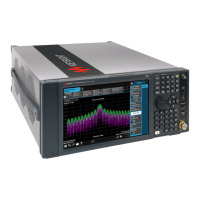
